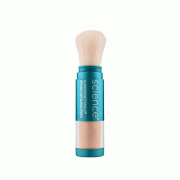Acne, pimples, white heads, black heads – a result of diet, stress and hormones. This pesky skin condition and acne scarring are treatable at Urban Body Laser.
Options for acne treatments here at Urban Body Laser:
Consultation with skin assessment (sessions are approximately 45 mins to 1 hour)
For new clients – an Acne Specialist will take the following steps:
- Conduct a visual and palpation skin analysis and determine your acne type and grade
- Go over aggravating factors that make you break out — foods, medications, cosmetics, etc.
- Teach you how to check your skincare products for pore-clogging ingredients
- Educate you about the formation of acne and how our system works to target problem areas and get results
If you decide to work with us, we will take the following additional steps:
- Determine your skin tolerance for our professional-strength products and perform an allergy test
- Develop an individualized homecare regimen specifically designed for your skin type and acne needs for the first 2 weeks
Acne Consultation with Treatment (sessions are approximately 2 hours)
For new clients. At this appointment you will have the following:
- In-depth Acne Consultation (see above)
- A customized Acne Treatment
PLEASE BE AWARE: If you have been on any prescription topical product (i.e. Differin, Retin-A, Clindamycin, Epiduo, etc.) you MUST discontinue use for 2 weeks prior to your appointment, or book the consultation only.

Our Acne Program
Acne is a complex disease. This is why we utilize a multi-aspect approach with the Acne Program at our clinic. With our Program we don’t just address current breakouts; we focus on acne prevention and on guiding our clients up to the point where their skin stays clear forever. With your commitment to our Program, we will take control of your acne in as little as 10-16 weeks.
Our Acne Program will do the following:
- Target current breakouts
- Prevent future breakouts
- Improve pigmentation
We will take the following steps:
- Develop a customized skincare regimen at the initial consultation
- Detect acne triggers in everyday life that exacerbate acne, such as food, skincare, makeup, and birth control
- Adjust your skincare regimen and perform customized treatments every 2-3 weeks
- Guide you through the whole process of getting clear. You will contact your Acne Specialist directly!
- Educate you about how to keep your skin clear
We will need your commitment to:
- Skincare regimen recommended by your Acne Specialist
- 3-4 Acne Treatments for mild acne or 6 -8 Acne Treatments for more severe acne
- Following all recommendations you receive at your Acne Consultation
Acne Treatments
- We use the Sciton BBL Blue Light (420nm) to treat inflammatory acne. Our guests come in for 20-30 minute treatments a few times over the course of a few weeks and receive the Blue Light treatment that painlessly destroys the bacteria that causes acne. The skin heals quickly and this process can be used on almost any skin type and level of acne from mild to severe. The treatment is virtually painless (most guests indicate their skin feels warm and tingly).
- We use Fontona’s Nd:YAG laser light to target overactive sebaceous glands in order to reduce the risk of developing new acne inflammation. This treatment also speeds up healing and promotes collagen remodeling.
- Hydrafacial Acne Treatment can be used for blocked pores, black heads or acne. This is a six-step treatment to clean out pores and calm inflammation. Bonus: it can also be used for large pores, oily, rough or dull skin, wrinkles, fine lines or skin discoloration.
- Our Hydrafacial MD HydraFacial deep pore treatment can be combined with blue LED light therapy that can help with acne. If you’re suffering with , there are a number of treatments that might help. HydraFacial is safe for all skin types and can address a wide variety of cosmetic concerns, including acne, acne scars, discoloration, large pores, oily complexion, rough skin, dull skin, wrinkles, and fine lines.

Acne Scar Removal
- For acne and other scars, we use Fotona’s Er:YAG laser to gently vaporize the acne-scarred surface to show off the healthy, undamaged skin underneath. We also use the Fraxel, treating fractions of the skin at the same time by using laser skin resurfacing.
- We use dermabrasion, microdermabrasion and microneedling to get rid of acne scars. These treatments can be used for other purposes too, such as removing traumatic scars, rhinophyma (nose enlargement in rosacea), wrinkles, and tattoo removal.
Sometimes dark spots, red spots or purple spots can be left behind after the acne has cleared; we have suggestions for treating these as well.
Microdermabrasion for Acne
Acne is a common skin issue that impacts the lives of many Canadians. However, in this day and age, it can be effectively treated with a wide range of procedures.
For those who are experiencing acne outbreaks or even some light acne scarring, one technique that can be employed is microdermabrasion. (link to micro article on home page) This technique helps improve skin imperfections by removing the upper layer of dead and damaged skin cells. This in turn will reveal fresher, healthier-looking skin in the individual. In addition to this, Microdermabrasion can help promote the production of new skin cells, which in turn will have a higher level of collagen, which can help improve the look of mild acne scars.
Microdermabrasion is great for those with an active acne condition since it exfoliates the skin and helps clear clogged pores of oil and dirt. It should be noted that this procedure is not always recommended in every acne case. In some situations, microdermabrasion can aggravate the condition, however your Technician will be able to provide you with advice as to whether microdermabrasion is right for your acne treatment plans. To help remove deep congestion you may add a steam and an extraction to increase the intensity and effectiveness of the treatment.
In addition to this, for individuals who have deeper acne scarring such as boxcar scars and ice pick scars then microdermabrasion is not likely the best solution. This would be Microneedling.

Because the microdermabrasion treatment is quite mild, we recommend four to six sessions, spread out across two to four weeks. This course of treatments will likely give you the best results and you should expect your skin to have a much more vibrant and rejuvenated appearance. Typically, most healthy individuals are ideal candidates for microdermabrasion but ultimately when you have an initial consultation you will be advised whether the treatment is suitable in your own individual case.
For those who are looking for a non-invasive treatment for acne, Urban Body Laser (link to homepage) may be the solution for you. Contact us online today or call our clinic based in downtown Vancouver at 604-696-5506 to learn more.
Why is skincare so important? Little acts can really add up. Our manager at Urban Body Laser, Janiece, shared this cautionary tale.
We all do our best to practice what we preach when it comes to taking care of our skin.
We try to make sure we are using proper products – PH-balanced cleanser, spritzers for particular concerns, proper moisturizers and so on. We keep clean brushes, wash them weekly and use clean pillowcases. We tell ourselves, “Don’t pick your face! Wash your hands!”
I know best that I shouldn’t be picking any pimples on my face. However, one day I woke up with a pimple on my face that was big and red. It had no whitehead. I left it all day and then before bed I had a very hot shower and steamed the big red pimple on my face. When I got out of the shower, there was a tiny whitehead on it. I gently tried to squeeze it, with no luck. The next morning, I had another hot shower and steamed it again. I got out of the shower and gently tried to squeeze the little whitehead again – nothing happened. Three days later we held a staff event and this thing was not looking so pretty. I covered it as best I could with my Colorescience and used a brush to cover the area with my pressed compact powder.

This was the beginning of a month-long journey of dealing with increasingly difficult issues with my face.
I did my best to wash and keep my face clean. I chalked it up to irritation from me picking at it. After six days of a rash traveling in all different directions on my face, I took a picture of it and sent it to my friend who is a Naturopathic Doctor (ND). He said that I had a Staph infection and needed to use some topical antibiotic ointment. I filled the prescription and spent two days applying it. During those two days, one hour after I applied it each time, my face was so itchy that I couldn’t stand the ointment – so I took it off. Needless to say, the infection kept spreading. It was oozing, moving farther along my face, cheek, chin and neck. It was painful, itchy and scary.
I ended up having to take a very high dose of penicillin to stop the infection. I was advised to check my temperature hourly – if it spiked, I would need to get to the hospital asap! After seven days of antibiotics, the infection was almost gone. Two days later, I went out for the evening and when I came home at around 3:00 am, my face started burning again. I didn’t realize that I had reinfected my face with my makeup brush and the pressed compact that I had used two weeks prior to cover what I thought was an irritated pimple. I didn’t know that I had reinfected myself, but instead thought the antibiotics had stopped working. I spent the entire Saturday with butterflies in my stomach all day, wondering what was going to happen to my face. Then, I started thinking about how I had used the brush again. I figured out that bacteria was still living on my makeup brush and pressed powder.

It took well over a month for the skin on my face to get back to normal.
After the infection was gone, my face was irritated and dry because it had been so damaged by the infection. I am so grateful I was able to use healthy products to restore and treat the affected area. I used R3 Derma Soothe, Aloe, and Revive to heal, plus Colorescience Tint du soleil, Pep Up and Pressed Mineral Foundation Compact to hide and heal.
I talk about keeping skin healthy and never in a million years did I think that this would happen to my face. It is sooooo important to keep your brushes clean! Don’t pick those nasty little annoying pimples…especially with fingers that have not been washed!
There are a lot of things here that I did wrong despite preaching these things daily:
- Always wash your brushes
- Never pick your face
- Never touch your face with dirty hands
I am writing this article and sharing with you why we ask our guests not to do the things they need to do to keep their skin healthy and what can go wrong – all for the exact reasons of what happened to my face. I broke every rule that I preach and ended up spending almost an entire month of time treating my face, taking unnecessary antibiotics, being itchy and uncomfortable and missing out on work and social events.
I am sharing this to create awareness about the worst-case scenarios that can happen – they even happen to us at Urban Body Laser when we don’t take our own advice.
A skincare routine encompasses all the choices you make and steps you take in your day-to-day skincare routine that have an effect on your skin health – from good dietary habits to getting enough sleep but remember, an effective and efficient skincare routine works only as well as the quality products you use and the regular regimen you follow, that have been selected with your specific concerns in mind.
As we’ve covered in earlier topics, the factors that contribute to your overall skin health (The Ultimate Guide to Skincare – What’s the Big Deal; The Ultimate Guide to Treating Dull Skin), this article will aim to focus mainly on the factor of products.
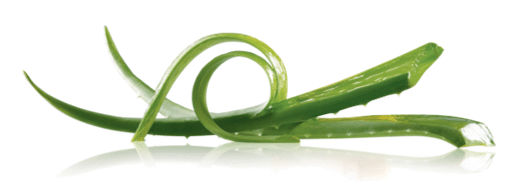
When Should You Start?
How ‘bout right now?!
The younger you are when you start, the better, but it’s never too late to establish healthy habits. Whether you want to help prevent or treat wrinkles, smooth away dryness or creases, or address other concerns or damage, you should start a skincare routine as soon as possible.
Age doesn’t matter; but skin type does.
Take into account, for a moment, a research-supported truth: “Skin has the same basic needs at every age”. Your age, gender, or ethnicity would be irrelevant, as your skin requires cleansing, exfoliation, hydration, protection, replenishing and restoration irrespective.
And as you age, your skin type changes. Some people may find their skin becomes drier with age, while others may experience oilier skin, breakouts and enlarged pores as their skin matures. For this reason, you should opt for a skincare regimen that is based on your skin type and concerns you want to address, and not on your age.
Good vs Poor Quality Products?
While good quality products help your skin look and feel better now, as well as in the future; poor quality products are ineffective and may even cause harm:
Good Quality are Products that:
- Have quality ingredients that can improve your skin health
- Protect from environmental damage
- Help fight or slow down the effects of aging
- Offer results for money
- Have results that may be dramatic if maintained
- Exceed standards and are more refined
- Once established, are easier to maintain
- Boost confidence and encourage you to adopt other healthy routines and an overall healthy lifestyle
Poor Quality are Products that:
- Prevent the skin from performing its natural functions properly
- Have ineffective results
- Cause burning or stinging of the skin
- Cause or spread infections
- Cause irritation or allergic reactions (such as rashes or blisters)
- Worsen problems by clogging pores or causing breakouts
- Cause dehydration or peeling
- Cause pigmentation changes
- Cause excessive oiliness
- Increase your risks of greater complications (such as cancers)
- Waste your money
In saying “Good” and “Poor Quality” products, we are referring to products selected and utilized, with or without considering your specific skin type and concerns. This, in no way, makes reference to a particular brand.
Tips to Consider When Building a Good Skincare Routine
These are our top tips to consider when building your daily skincare regimen:
1. Know Your Skin Type
The only tips that can be applied to and followed by all skin types are:
- Apply the four fundamentals – cleanse, tone, moisturize, and protect!
- Stay hydrated
- Change pillow cases at least once a week
- Wash or tie back hair before bed
- Wear sunscreen every day and apply 15 minutes before going out
- Don’t forget to patch test new products to avoid potential allergic reactions
Otherwise, steer clear of the idea of applying the “one size fits all” approach when it comes to your skin and its care.
As we mature and our skin is exposed to the elements, it evolves, and sometimes, our skin type alters in that process. In a previous article, we explored the various skin types and how to perform a self-evaluation. However, to be certain you’re using the correct products that satisfy your skin’s cravings, please visit Urban Body Laser to have one of our qualified aestheticians evaluate your needs.
2. Timing, Order and Method of Product Application All Matters
Consider Product Absorption Time
It’s highly important to allow adequate time for your skin to properly absorb the products you’re applying for effective results.
Layer Your Products from Thinnest Consistency to Thickest
Ideally, you should begin with the products containing ingredients that most critical for penetrating the skin (such as antioxidants in serums) – these products tend to be ‘thinner’ in consistency. Then, you want to lock these products in with a moisturizer, which is ‘thicker’ in consistency. Moisturizers contain ingredients like emollients and humectants, which are meant to sit on top of your skin to help keep it moist and soft.
If products are not applied in the correct order, you will not achieve the best results from your skincare regimen. Read further for more details.
Work Products into Your Skin in an Upwards and Outwards Motion
Using an upwards and outwards motion when applying products helps with lifting and firming the skin.
3. Back to Basics
No matter what your skin type is, a basic daily skincare routine can help you maintain skin health and improve some concerns. A basic daily skincare routine has 4 simple steps, that you can do twice daily – mornings and evenings.
Cleanse
Cleanser is the foundation of any skin-care routine. It’s important to gently wash your face twice a day to remove makeup, dirt and pollutants that have settled on your skin, that can cause clogged pores or irritation, and starting with a cleaned surface allows your other skincare products to work better.
Tone
Toner is used to rebalance your skin’s pH levels, as well as to remove anything missed while cleansing
Moisturize
Moisturizer should be used twice daily to hydrate and soften your skin, and prevent water loss that occurs throughout the day.
Protect
Using a physical sunscreen (SPF 30 or higher) during the day, all-year-round.
The goal of any skincare regimen is to spruce up your complexion so it’s functioning at its best, and also target any areas you want to correct. In some case, faces do better with fewer products; so, if you’re just starting out, keep it simple with this basic skincare routine.
4. Always Wear Protection
We’ve mentioned it as one of the fundamentals and we’re saying it again, don’t forget the sunscreen. SPF protects your skin from sun damage such as spots, dehydration, hyperpigmentation, wrinkles and more importantly, it prevents more serious conditions such as skin cancer and melanoma. Remember to opt for a physical sunscreen (rather than chemical), that offers protection, water resistance, and has an SPF of 30 or higher.
5. Patience is Your Ally
Bear in mind that there’s no such thing as a quick fix. Patience, diligence and consistency will be required on your part, to stick to your regimen for a minimum of two-months before results are noticeable.
As the saying goes: “When it comes to patience, we don’t have to change old habits; we can build better ones.” – Sue Bender
6. Self-Care is Not Selfish
Opportunities for self-care have ultimately been replaced by working long hours and in some cases, caring for others before ourselves. But you wouldn’t drive a car with no fuel in it! In the world we live in today, setting aside time for self-care is not an indulgence but rather an absolute necessity — more now, than ever before.
So, drop the guilt and show yourself and your skin some love – it’s proven to have amazing physical and mental health benefits and ultimately benefits everyone else around you as well?
The A – Z of a Skincare Routine
Now that we’ve established the basics, let’s get into an actual skincare routine, shall we?
The Optimal Order to Apply Skincare Products
The main purpose of a skincare routine is to preserve your skin health and keep it functioning at its best. It is not about perfection or correction but rather, creating a strong foundation for your overall wellbeing. That said, there’s no singular prescribed skincare routine for everyone—it’s highly personalized.
So, what might this “foundation” look like? Well, we’ve included a daily skincare routine, showing the optimal order to apply your skincare products for both mornings and evenings:
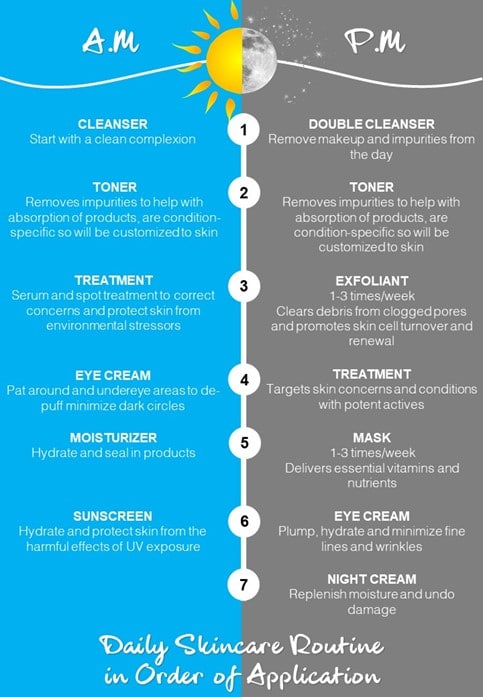
Skincare Products
Okay, by now, you’re probably feeling slightly overwhelmed – I mean, who wouldn’t? But allow us to put you at ease.
In this next section, we aim to explore each product in more detail.
Let’s start:
CLEANSERS
What is it?
Cleansing (washing) your face to remove excess oils, dirt, and other unwanted particles on your face.
Regular cleansing is essential for maintaining proper hydration and removing excessive dirt, oil, and dead skin cell build-up on the skin’s surface, which causes bacterial blockages of the pores, resulting in inflammation, and acne.
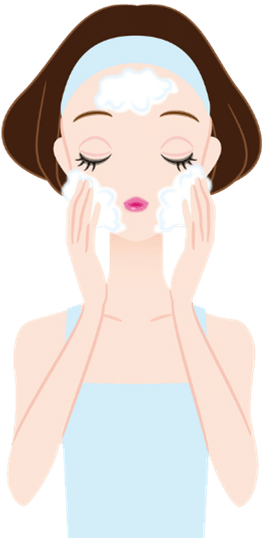
How should it be applied?
- Wash your hands and rinse your face with lukewarm water
- Apply a small amount of gentle cleanser onto hands
- Massage cleanser all over your face using gentle pressure
- Rinse hands and massage your face with water to rinse until water runs clear and cleanser and grime are removed
- Gently pat your face dry with a soft towel
Be sure to cleanse twice in the evenings, especially if you wear makeup:
- First remove makeup with cleansing oil and soft cotton pad
- Allow eye-makeup removers to sit for a few minutes so makeup comes off more easily; Avoid rubbing delicate eye area
- Follow up with a full-face gentle cleanse
Alternatively, refer to product directions for proper application as products can vary in application
When should it be used?
Mornings
Evenings (Double)
After exercising
Excessive cleansing can lead to skin irritation and stripping of essential skin layers
Our recommendation:
For Dry Skin:
Balancing Cleanser
For Sensitive Skin:
Calming Cleanser
For Oily Skin:
Cleanse/Purifier
All Skin Types:
Sea Mineral Cleanse
Illuminating Cleanser
TONERS
What is it?
Toners contain ingredients that replenish and restore nutrients to the skin, enhancing and hydrating the skin’s surface by unclogging pores, allowing better absorption of skincare products and providing additional cleansing
Toners may also help to relieve dry patches and discoloration
Toners also are condition-specific, so, depending on the condition of the skin, the toner will be customized
Exfoliating toners, retinoids or other exfoliators should not be used at the same time
How should it be applied?
- Toners should be applied with a soft cotton pad, directly after cleansing
- Pour a few drops of toner onto a cotton pad (ensure pad is not soaking wet)
- Gently swipe onto your face and neck area, avoiding delicate eye and lip areas
- Pay special attention to the hard-to-reach areas such as the eye brows, hairline and sides of nose
Alternatively, refer to product directions for proper application as products can vary in application
When should it be used?
Mornings
Evenings
Hydrating formulas can be used twice a day
Exfoliating formulas—formulas that remove dead skin cells with ingredients like glycolic acid—should only be used in the evenings.
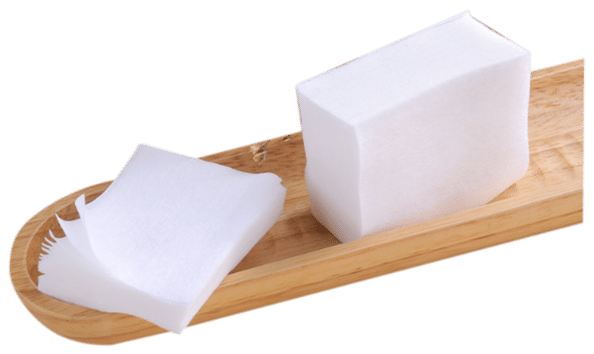
Our recommendation:
For Dry Skin:
Illuminating Spritzer
For Sensitive Skin:
Calming Spritzer
For Oily Skin:
Pure Spritzer
All Skin Types:
Rain Spritzer
SERUMS
What is it?
Serums are known for their ability to penetrate deeper into the skin layers, enabling delivery of powerful ingredients directly to the skin.
Serums may contain exfoliants such as alpha-hydroxy acids (AHA) or lactic acid.
Serums are great for treating specific skin concerns and are formulated according to one’s skin type
How should it be applied?
- Serum should be applied with clean fingers, by gently patting onto skin
- Ensure coverage of your entire face
- Allowing serum to fully absorb into your skin before applying next product
Alternatively, refer to product directions for proper application as products can vary in application
When should it be used?
Mornings
Evenings
Use a serum with antioxidants—like a brightening vitamin C serum— in the mornings, for protection from free radicals you’ll encounter throughout the day.
Use a moisturizing serum with hyaluronic acid, to keep your skin from drying out at night (especially if you’re using anti-aging or acne treatments that can irritate and dry out the skin)
Serums are normally applied after toners, just before a moisturizer or SPF, though always remember:
- Apply water-based serums before moisturizer
- Apply oil-based serums after moisturizer
Our recommendation:
For Dry Skin:
Boost
Enrich
Illuminating Serum
For Sensitive Skin:
Organic Aloe Gel
Soothe
For Oily Skin:
Revive
Vitamin A Serum
All Skin Types:
Aox + Serum
Awaken
Enhance
Rejuvenate +
Smoothing Serum
EXFOLIANTS & MASKS
What is it?
Exfoliants work by removing the top layer of dead skin cells that can cause skin to appear thick and dull, to reveal a fresh, glowing layer of new skin. It also helps to dislodge ingrown hairs from beneath the upper layers of skin.
- Chemical exfoliants – including alpha-hydroxy acids (aka AHA: glycolic acid, lactic acid, citric acid) and hydroxy acids (salicylic acid) – are excellent for inducing cell turnover, increasing collagen formation, and improving dullness
- Physical exfoliation is manually scrubbing away dead skin cells, excess oil, and buildup with a face scrub
Face masks, reveal fresh, clear skin and leave your complexion looking polished and although relaxing, may dry out your skin if overused
How should it be applied?
EXFOLIANTS:
- After cleansing and toning, with clean hands, apply a thin layer of exfoliant over face and neck
- Leave on skin for a few minutes
- Gently massage over skin, using light pressure to exfoliate the skin of dead skin cells
- Rinse thoroughly until water runs clear
- Gently pat dry with a clean towel and follow with appropriate moisturizer
MASKS:
- After cleansing and toning, with clean hands, apply a very thin layer to face and neck, avoiding eye area
- Leave on for a few minutes; Rinse thoroughly with warm water until water runs clear
- Gently pat dry with a clean towel and follow with appropriate moisturizer
Alternatively, refer to product directions for proper application as products can vary in application
When should it be used?
Evenings
Exfoliating can be harsh on your skin, so it’s recommended to exfoliate no more than 2 – 3 times a week
Hydrating masks are recommended to be used no more than 2 – 3 times a week
Do not follow with toner or products that contain essential oils, acids or enzymes as irritation will occur
Our recommendation:
EXFOLIANTS:
All Skin Types:
Microderm Exfoliant
MASKS:
For Dry Skin:
Refresh Hydrating Mask with Hyaluronic Acid
For Sensitive Skin:
Remedy
For Oily Skin:
Flower Acid Peel
All Skin Types:
Detoxifying Mask
Glycolic Cherry Peel
EYE CREAMS
What is it?
Eye creams protect your eye area from other potent skincare products and also help to moisturize, hydrate, illuminate, tighten, and provide antioxidants to this delicate area.
Eye creams may be used to treat fine lines, wrinkles, puffiness or dark circles under your eyes
How should it be applied?
- To apply, tap gently around the entire eye area, including eyelid
In the mornings, use an eye cream that has a rollerball applicator – the cold steel helps with fluid retention
In the evenings, tap on a hydrating eye cream that will protect your under-eyes and repair your skin barrier overnight
Alternatively, refer to product directions for proper application as products can vary in application
When should it be used?
Mornings
Evenings
Apply before moisturizer, as eye creams tend to be thinner than face moisturizers
Our recommendation:
All Skin Types:
Aqua Eye Cream
MOISTURIZERS & NIGHT CREAMS
What is it?
Moisturizers hydrate the skin, leaving it feeling soft to the touch and locks in all other applied products
Moisturizers may have an SPF, which offers UV protection
How should it be applied?
- Dab moisturizer with clean fingers, onto the face and neck areas
- Spread the moisturizer into the skin using a swirling (upwards and outwards) motions until fully absorbed into your skin
- Wait for the moisturizer to dry before applying makeup
Alternatively, refer to product directions for proper application as products can vary in application
When should it be used?
Mornings
Evenings
Mornings: apply a lightweight lotion or moisturizer (ideally with SPF 30 or higher)
Evenings: apply a thicker night cream
Moisturizer should be applied as the last step before makeup is applied
Our recommendation:
For Dry Skin:
Illuminate
For Sensitive Skin:
Restore
For Oily Skin:
Matte Moisture
All Skin Types:
Enrich Plus
SPOT TREATMENTS
What is it?
Spot treatments work well for acne-prone skin and normally contain concentrated salicylic acid or benzoyl peroxide.
Spot treatments should be applied as close to the skin as possible, to maximize their benefits
If using a spot treatment, don’t combine it with retinoids or anything else that can irritate your skin
How should it be applied?
Remember that spot treatments may dry out your skin, so apply only on spots where needed
Alternatively, refer to product directions for proper application as products can vary in application
When should it be used?
Evenings
Our recommendation:
For Oily Skin:
Clearify
SUNSCREENS
What is it?
Sunscreen should be the last step in your daytime skincare routine. It prevents skin discoloration, signs of aging and decreases the development of skin cancers.
Opt for: a sunscreen that offers SPF 30 or higher; a broad-spectrum SPF (meaning that your sunscreen protects from both UVA and UVB radiation)
Physical sunscreen: a natural mineral is used to block UV rays; works immediately; locks in moisture and reflects the heat
Chemical sunscreen: has to be absorbed into the skin to be effective so applying after your moisturizer will delay and hinder that; if you apply a chemical sunscreen before your moisturizer, then your moisturizer will not work as well.
For those who prefer chemical sunscreens, look for a formula that offers moisturizing benefits, so you can get your daily hydration needs while protecting your skin
Refer to product directions for proper application as products can vary in application
When should it be used?
Daily
Product should be applied and reapplied daily, irrespective of weather conditions
Our recommendation:
All Skin Types:
Sunforgettable® Total Protection™ Face Shield SPF 50
We hope that this guide has helped you to understand the importance and benefits of a proper skincare regimen and the products involved.
However, if you would like to learn even more, then set up a consultation at Urban Body Laser today! Our friendly and qualified team would be happy to answer any questions you may have and help you develop the best skincare routine and products for your concerns and lifestyle. Contact us at info@urbanbodylaser.com, live chat or at (604) 229-2836.
We proudly invite you to browse our online store to view our incredible product range at https://urbanbody.myshopify.com! Our collection of R3 Derma Health products contains the highest concentration of active and natural ingredients, best suited for those individuals who desire faster results.
An eye cream is precisely as stated: an EYE cream. The skin around your eyes is up to ten times thinner than the skin on the rest of your face and shows signs of aging more quickly than other areas of the face do, hence. This thinness makes it more delicate, vulnerable, and prone to allergic reactions than other facial skin. This is why the delicate skin around your eyes needs an extra dose of TLC, which a regular face moisturizer might not be able to deliver. Using a regular face cream is not ideal and could even be damaging to that delicate area.
Does this mean having an additional product on your shelf? Well, it surely does! But when you break it down and realize how different the needs of the eye area are and the ingredients that go into these products, then, it will all make perfect sense.
How is the Eye area different?
Within the area around the eye itself, the skin is very delicate. The eye-area skin does not enjoy as much natural moisture from sebum (oil), leaving it prone to laxity, developing fine lines and wrinkles, becoming looser, and even thinner.
Eye products have been specifically formulated to ensure the essential ingredients actually gives the eyes what it needs, something which a face moisturiser cannot do.
Why should you invest in an eye cream?
The skin around your eyes also gets a much greater workout. Every time you move your eyes, whether you squint, smile, or widen them in surprise, you’re using muscles around your eyes. Over time, factors like dryness and loss of collagen and elasticity lead to the formation of small wrinkles near your eyes, commonly known as ‘crow’s feet’. Smoking and exposure to the sun’s harmful ultraviolet rays can also contribute to wrinkle formation.
Incorporating an eye cream into your daily skincare routine can help minimize the appearance of these wrinkles as well as tackle other skin concerns like dryness, puffiness, dark circles, and pigmentation.
And the sooner you start using one, the better. The best time to start using an eye cream is before you think you need one. It’s easier to prevent signs of aging than to correct them, so we recommend investing in an eye cream starting in the 20’s. Applying an eye cream twice every day for optimal results.
While the cost can be exorbitant, rest assured that it’s money well spent. Because the delicate skin around our eyes is usually one of the first spots on the face to show signs of aging, sun damage, and stress. Eye creams can be an effective preventive and reparative measure for addressing all of that. So, even if you only use cleanser, moisturizer, and sunscreen, an eye cream would be a worthwhile addition to your skincare lineup.
What ingredients should you look for in an eye cream?
Some key ingredients to look for are hyaluronic acid and peptides. HA helps to hydrate while peptides boost collagen production, making your skin plumper and more youthful.
Since the skin around your eyes has very few active oil glands, hydrating ingredients like hyaluronic acid, squalene and ceramides are essential for drawing in and sealing in the moisture.
For anti-aging benefits, choose an eye cream containing retinol or a retinol derivative in a moisturizing base—look for ceramides, dimethicone, glycerin and oils in the ingredient list.
In addition, you should also consider factors like your skin type, what skin concern you wish to target, whether you’ll be layering makeup on top, etc. when picking an eye cream. So then, what ingredients should you look for in an eye cream?
Whether you want to tackle fine lines, treat dark circles, or reduce puffiness, our recommended skincare picks have got you covered:
- For dryness: Aqua Eye Cream
- For dark circles: Awaken
- For de-puffing: Awaken
- For fighting photo-damage: Colorescience Total Eye 3-in-1 Renewal Therapy
- For firming: Enhance or Aqua Eye Cream
- For dull, dry skin: Enhance or Aqua Eye Cream
- For wrinkle repair: Aqua Eye Cream
- For tackling signs of aging: Aqua Eye Cream
To save time, can I use the same anti-wrinkle eye cream for my face and under eyes?
Skin care isn’t cheap and eye products tend to be more expensive. Which raises the question: why does moisturizer marketed for your under-eyes come in a tiny tube and cost so much more? Is it really that special? And are you doing your eyes a disservice if you use regular moisturizer as eye cream?
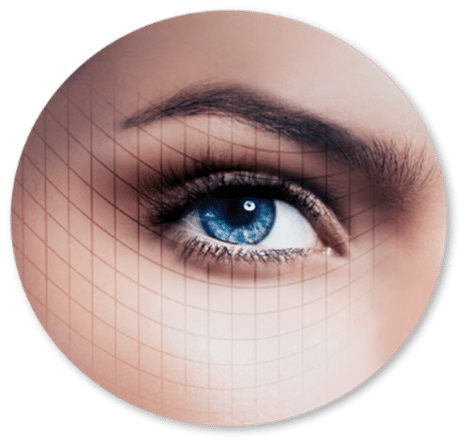 The answer is absolutely. Let us explain – It’s true that eye creams contain the same types of ingredients found in many face creams. However, they’re also meant to address hyper-specific skincare issues. Not only does the skin underneath your eyes require more targeted TLC (i.e., retinol for wrinkles, ingredients for puffiness, niacinamide for dark circles, etc.), it’s also a lot thinner than other areas of the face—in fact, it’s the thinnest skin on the body.
The answer is absolutely. Let us explain – It’s true that eye creams contain the same types of ingredients found in many face creams. However, they’re also meant to address hyper-specific skincare issues. Not only does the skin underneath your eyes require more targeted TLC (i.e., retinol for wrinkles, ingredients for puffiness, niacinamide for dark circles, etc.), it’s also a lot thinner than other areas of the face—in fact, it’s the thinnest skin on the body.
In other words, it’s a lot more sensitive.
Now, let’s say you were to use a regular anti-wrinkle face cream with the same targeted ingredients on your under-eyes. That anti-wrinkle cream probably contains a much greater concentration of active ingredients to combat fine lines (somewhat ironic considering that eye creams cost way more than facial moisturizers). This isn’t a bad thing for your face, which can probably tolerate that, but it might not be so great for your under-eyes, which is a more delicate space.
Eye creams tend to be gentler, less irritating, and more moisturizing than regular creams because the delicate skin around the eyes is particularly prone to irritation, fine lines, dark circles, and puffiness.
That being said, you might be able to tolerate regular anti-wrinkle creams on the eye area—if your skin isn’t very sensitive and the formulation isn’t very irritating (read: no fragrances). But proceed with caution.
As for the matter of using eye cream all over your face (Beyoncé’s makeup artist even swears by it), there’s the obvious answer. Unless you’re Beyoncé, it’s going to be an expensive affair. For the financial downside alone, we don’t recommend it as an everyday practice. Plus, you’re actually better off not using an eye cream for your whole face because your face can tolerate (and will benefit from) much higher proportions of active ingredients.
Which one is better: eye cream or eye serum?
An eye serum is lighter than a cream, contains less oil, and uses a vehicle that allows for better penetration of potent anti-aging ingredients as opposed to an eye cream. “Eye serums in general are better for wrinkles, dark circles, reduction of puffiness and help improve skin firmness.”
When should I start using an Eye Cream?
Rule of thumb: When it comes to skincare, the earlier the better. In my many years of experience as a skincare specialist, I believe it’s the one product that you won’t appreciate the use of until you stop and can actually see the effect it has had. The reality is – prevention is better than cure – when it comes to the delicate eye area.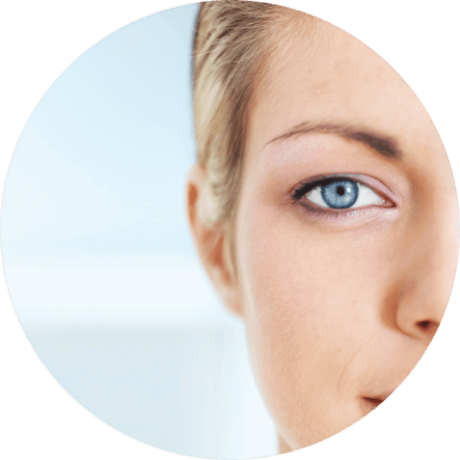
It’s often the simple concepts of skincare that get lost in translation or that people become confused by, so we hope this has helped you understand this important concept of eye care. We also have a ton of info on our Instagram page to provide guidelines and tips.
If you have specific questions, we encourage you to please get in contact with us on (604) 696-5506 or book to have a consultation with one of our skin experts. We will work our way through a series of questions so that we are able to understand your skincare requirements, which will aid in ensuring the products we recommend are uniquely matched to these concerns.
The bonus of our R3 Derma Health skincare range is that we can custom blend our products to make sure they meet all the needs of your skin, perfectly!
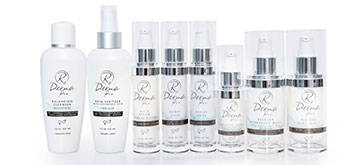
Hydrabooty is a treatment provided by Urban Body Laser to help with all sorts of skin issues. It involves steaming, hydrarejuvenation and a jelly mask. Hydrabooty helps with issues such as acne scarring, pimples, folliculitis, keratosis pilaris. To read more about Hydrabooty and the best butt acne treatment as well as gain some helpful tips for home treatment, visit our Hydrabooty page.
What Is A Skincare Routine?
A skincare routine encompasses all the choices you make and steps you take in your day-to-day routine that have an effect on your skin health – from good dietary habits to getting enough sleep but remember, an effective and efficient skincare routine works only as well as the quality products you use and the regular regimen you follow, that have been selected with your specific concerns in mind.
Since we’ve covered in earlier topics, the factors that contribute to your overall skin health (The Ultimate Guide to Skincare – What’s the Big Deal; The Ultimate Guide to Treating Dull Skin), this article will aim to focus mainly on the factor of products.

When Should You Start?
How ‘bout right now?!
The younger you are when you start, the better, but it’s never too late to establish healthy habits. Whether you want to help prevent or treat wrinkles, smooth away dryness or creases, or address other concerns or damage, you should start a skincare routine as soon as possible.
Age doesn’t matter; but skin type does.
Take into account, for a moment, a research-supported truth: “Skin has the same basic needs at every age”. Your age, gender, or ethnicity would be irrelevant, as your skin requires cleansing, exfoliation, hydration, protection, replenishing and restoration irrespective.
And as you age, your skin type changes. Some people may find their skin becomes drier with age, while others may experience oilier skin, breakouts and enlarged pores as their skin matures. For this reason, you should opt for a skincare regimen that is based on your skin type and concerns you want to address, and not on your age.
Good vs Poor Quality Products?
While good quality products help your skin look and feel better now, as well as in the future; poor quality products are ineffective and may even cause harm:
Good Quality are Products that:
- Have quality ingredients that can improve your skin health
- Protect from environmental damage
- Help fight or slow down the effects of aging
- Offer results for money
- Have results that may be dramatic if maintained
- Exceed standards and are more refined
- Once established, are easier to maintain
- Boost confidence and encourage you to adopt other healthy routines and an overall healthy lifestyle
Poor Quality are Products that:
- Prevent the skin from performing its natural functions properly
- Have ineffective results
- Cause burning or stinging of the skin
- Cause or spread infections
- Cause irritation or allergic reactions (such as rashes or blisters)
- Worsen problems by clogging pores or causing breakouts
- Cause dehydration or peeling
- Cause pigmentation changes
- Cause excessive oiliness
- Increase your risks of greater complications (such as cancers)
- Waste your money
In saying “Good” and “Poor Quality” products, we are referring to products selected and utilized, with or without considering your specific skin type and concerns. This, in no way, makes reference to a particular brand.
Tips to Consider When Building a Good Skincare Routine
These are our top tips to consider when building your daily skincare regimen:
1. Know Your Skin Type
The only tips that can be applied to and followed by all skin types are:
- Apply the four fundamentals – cleanse, tone, moisturize, and protect!
- Stay hydrated
- Change pillow cases at least once a week
- Wash or tie back hair before bed
- Wear sunscreen every day and apply 15 minutes before going out
- Don’t forget to patch test new products to avoid potential allergic reactions
Otherwise, steer clear of the idea of applying the “one size fits all” approach when it comes to your skin and its care.
As we mature and our skin is exposed to the elements, it evolves, and sometimes, our skin type alters in that process. In a previous article, we explored the various skin types and how to perform a self-evaluation. However, to be certain you’re using the correct products that satisfy your skin’s cravings, please visit Urban Body Laser to have one of our qualified aestheticians evaluate your needs.
2. Timing, Order and Method of Product Application All Matters
Consider Product Absorption Time
It’s highly important to allow adequate time for your skin to properly absorb the products you’re applying for effective results.
Layer Your Products from Thinnest Consistency to Thickest
Ideally, you should begin with the products containing ingredients that most critical for penetrating the skin (such as antioxidants in serums) – these products tend to be ‘thinner’ in consistency. Then, you want to lock these products in with a moisturizer, which is ‘thicker’ in consistency. Moisturizers contain ingredients like emollients and humectants, which are meant to sit on top of your skin to help keep it moist and soft.
If products are not applied in the correct order, you will not achieve the best results from your skincare regimen. Read further for more details.
Work Products into Your Skin in an Upwards and Outwards Motion
Using an upwards and outwards motion when applying products helps with lifting and firming the skin.
3. Back to Basics
No matter what your skin type is, a basic daily skincare routine can help you maintain skin health and improve some concerns. A basic daily skincare routine has 4 simple steps, that you can do twice daily – mornings and evenings.
Cleanse
Cleanser is the foundation of any skin-care routine. It’s important to gently wash your face twice a day to remove makeup, dirt and pollutants that have settled on your skin, that can cause clogged pores or irritation, and starting with a cleaned surface allows your other skincare products to work better.
Tone
Toner is used to rebalance your skin’s pH levels, as well as to remove anything missed while cleansing
Moisturize
Moisturizer should be used twice daily to hydrate and soften your skin, and prevent water loss that occurs throughout the day.
Protect
Using a physical sunscreen (SPF 30 or higher) during the day, all-year-round.
The goal of any skincare regimen is to spruce up your complexion so it’s functioning at its best, and also target any areas you want to correct. In some case, faces do better with fewer products; so, if you’re just starting out, keep it simple with this basic skincare routine.
4. Always Wear Protection
We’ve mentioned it as one of the fundamentals and we’re saying it again, don’t forget the sunscreen. SPF protects your skin from sun damage such as spots, dehydration, hyperpigmentation, wrinkles and more importantly, it prevents more serious conditions such as skin cancer and melanoma. Remember to opt for a physical sunscreen (rather than chemical), that offers protection, water resistance, and has an SPF of 30 or higher.
5. Patience is Your Ally
Bear in mind that there’s no such thing as a quick fix. Patience, diligence and consistency will be required on your part, to stick to your regimen for a minimum of two-months before results are noticeable.
As the saying goes: “When it comes to patience, we don’t have to change old habits; we can build better ones.” – Sue Bender
6. Self-Care is Not Selfish
Opportunities for self-care have ultimately been replaced by working long hours and in some cases, caring for others before ourselves. But you wouldn’t drive a car with no fuel in it! In the world we live in today, setting aside time for self-care is not an indulgence but rather an absolute necessity — more now, than ever before.
So, drop the guilt and show yourself and your skin some love – it’s proven to have amazing physical and mental health benefits and ultimately benefits everyone else around you as well?
The A – Z of a Skincare Routine
Now that we’ve established the basics, let’s get into an actual skincare routine, shall we?
The Optimal Order to Apply Skincare Products
The main purpose of a skincare routine is to preserve your skin health and keep it functioning at its best. It is not about perfection or correction but rather, creating a strong foundation for your overall wellbeing. That said, there’s no singular prescribed skincare routine for everyone—it’s highly personalized.
So, what might this “foundation” look like? Well, we’ve included a daily skincare routine, showing the optimal order to apply your skincare products for both mornings and evenings:

Skincare Products
Okay, by now, you’re probably feeling slightly overwhelmed – I mean, who wouldn’t? But allow us to put you at ease.
In this next section, we aim to explore each product in more detail.
Let’s start:
CLEANSERS
What is it?
Cleansing (washing) your face to remove excess oils, dirt, and other unwanted particles on your face.
Regular cleansing is essential for maintaining proper hydration and removing excessive dirt, oil, and dead skin cell build-up on the skin’s surface, which causes bacterial blockages of the pores, resulting in inflammation, and acne

How should it be applied?
- Wash your hands and rinse your face with lukewarm water
- Apply a small amount of gentle cleanser onto hands
- Massage cleanser all over your face using gentle pressure
- Rinse hands and massage your face with water to rinse until water runs clear and cleanser and grime are removed
- Gently pat your face dry with a soft towel
Be sure to cleanse twice in the evenings, especially if you wear makeup:
- First remove makeup with cleansing oil and soft cotton pad
- Allow eye-makeup removers to sit for a few minutes so makeup comes off more easily; Avoid rubbing delicate eye area
- Follow up with a full-face gentle cleanse
Alternatively, refer to product directions for proper application as products can vary in application
When should it be used?
Mornings
Evenings (Double)
After exercising
Excessive cleansing can lead to skin irritation and stripping of essential skin layers
Our recommendation:
For Dry Skin:
Balancing Cleanser
For Sensitive Skin:
Calming Cleanser
For Oily Skin:
Cleanse/Purifier
All Skin Types:
Sea Mineral Cleanse
Illuminating Cleanser
TONERS
What is it?
Toners contain ingredients that replenish and restore nutrients to the skin, enhancing and hydrating the skin’s surface by unclogging pores, allowing better absorption of skincare products and providing additional cleansing
Toners may also help to relieve dry patches and discoloration
Toners also are condition-specific, so, depending on the condition of the skin, the toner will be customized
Exfoliating toners, retinoids or other exfoliators should not be used at the same time
How should it be applied?
- Toners should be applied with a soft cotton pad, directly after cleansing
- Pour a few drops of toner onto a cotton pad (ensure pad is not soaking wet)
- Gently swipe onto your face and neck area, avoiding delicate eye and lip areas
- Pay special attention to the hard-to-reach areas such as the eye brows, hairline and sides of nose
Alternatively, refer to product directions for proper application as products can vary in application
When should it be used?
Mornings
Evenings
Hydrating formulas can be used twice a day
Exfoliating formulas—formulas that remove dead skin cells with ingredients like glycolic acid—should only be used in the evenings
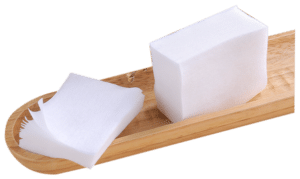
Our recommendation:
For Dry Skin:
Illuminating Spritzer
For Sensitive Skin:
Calming Spritzer
For Oily Skin:
Pure Spritzer
All Skin Types:
Rain Spritzer
SERUMS
What is it?
Serums are known for their ability to penetrate deeper into the skin layers, enabling delivery of powerful ingredients directly to the skin.
Serums may contain exfoliants such as alpha-hydroxy acids (AHA) or lactic acid.
Serums are great for treating specific skin concerns and are formulated according to one’s skin type
How should it be applied?
- Serum should be applied with clean fingers, by gently patting onto skin
- Ensure coverage of your entire face
- Allowing serum to fully absorb into your skin before applying next product
Alternatively, refer to product directions for proper application as products can vary in application
When should it be used?
Mornings
Evenings
Use a serum with antioxidants—like a brightening vitamin C serum— in the mornings, for protection from free radicals you’ll encounter throughout the day.
Use a moisturizing serum with hyaluronic acid, to keep your skin from drying out at night (especially if you’re using anti-aging or acne treatments that can irritate and dry out the skin)
Serums are normally applied after toners, just before a moisturizer or SPF, though always remember:
- Apply water-based serums before moisturizer
- Apply oil-based serums after moisturizer
Our recommendation:
For Dry Skin:
Boost
Enrich
Illuminating Serum
For Sensitive Skin:
Organic Aloe Gel
Soothe
For Oily Skin:
Revive
Vitamin A Serum
All Skin Types:
Aox + Serum
Awaken
Enhance
Rejuvenate +
Smoothing Serum
EXFOLIANTS & MASKS
What is it?
Exfoliants work by removing the top layer of dead skin cells that can cause skin to appear thick and dull, to reveal a fresh, glowing layer of new skin. It also helps to dislodge ingrown hairs from beneath the upper layers of skin.
- Chemical exfoliants – including alpha-hydroxy acids (aka AHA: glycolic acid, lactic acid, citric acid) and hydroxy acids (salicylic acid) – are excellent for inducing cell turnover, increasing collagen formation, and improving dullness
- Physical exfoliation is manually scrubbing away dead skin cells, excess oil, and buildup with a face scrub
Face masks, reveal fresh, clear skin and leave your complexion looking polished and although relaxing, may dry out your skin if overused
How should it be applied?
EXFOLIANTS:
- After cleansing and toning, with clean hands, apply a thin layer of exfoliant over face and neck
- Leave on skin for a few minutes
- Gently massage over skin, using light pressure to exfoliate the skin of dead skin cells
- Rinse thoroughly until water runs clear
- Gently pat dry with a clean towel and follow with appropriate moisturizer
MASKS:
- After cleansing and toning, with clean hands, apply a very thin layer to face and neck, avoiding eye area
- Leave on for a few minutes; Rinse thoroughly with warm water until water runs clear
- Gently pat dry with a clean towel and follow with appropriate moisturizer
Alternatively, refer to product directions for proper application as products can vary in application
When should it be used?
Evenings
Exfoliating can be harsh on your skin, so it’s recommended to exfoliate no more than 2 – 3 times a week
Hydrating masks are recommended to be used no more than 2 – 3 times a week
Do not follow with toner or products that contain essential oils, acids or enzymes as irritation will occur
Our recommendation:
EXFOLIANTS:
All Skin Types:
Microderm Exfoliant
MASKS:
For Dry Skin:
Refresh Hydrating Mask with Hyaluronic Acid
For Sensitive Skin:
Remedy
For Oily Skin:
Flower Acid Peel
All Skin Types:
Detoxifying Mask
Glycolic Cherry Peel
EYE CREAMS
What is it?
Eye creams protect your eye area from other potent skincare products and also help to moisturize, hydrate, illuminate, tighten, and provide antioxidants to this delicate area.
Eye creams may be used to treat fine lines, wrinkles, puffiness or dark circles under your eyes
How should it be applied?
- To apply, tap gently around the entire eye area, including eyelid
In the mornings, use an eye cream that has a rollerball applicator – the cold steel helps with fluid retention
In the evenings, tap on a hydrating eye cream that will protect your under-eyes and repair your skin barrier overnight
Alternatively, refer to product directions for proper application as products can vary in application
When should it be used?
Mornings
Evenings
Apply before moisturizer, as eye creams tend to be thinner than face moisturizers
Our recommendation:
All Skin Types:
Aqua Eye Cream
MOISTURIZERS & NIGHT CREAMS
What is it?
Moisturizers hydrate the skin, leaving it feeling soft to the touch and locks in all other applied products
Moisturizers may have an SPF, which offers UV protection

How should it be applied?
- Dab moisturizer with clean fingers, onto the face and neck areas
- Spread the moisturizer into the skin using a swirling (upwards and outwards) motions until fully absorbed into your skin
- Wait for the moisturizer to dry before applying makeup
Alternatively, refer to product directions for proper application as products can vary in application
When should it be used?
Mornings
Evenings
Mornings: apply a lightweight lotion or moisturizer (ideally with SPF 30 or higher)
Evenings: apply a thicker night cream
Moisturizer should be applied as the last step before makeup is applied
Our recommendation:
For Dry Skin:
Illuminate
For Sensitive Skin:
Restore
For Oily Skin:
Matte Moisture
All Skin Types:
Enrich Plus
SPOT TREATMENTS
What is it?
Spot treatments work well for acne-prone skin and normally contain concentrated salicylic acid or benzoyl peroxide.
Spot treatments should be applied as close to the skin as possible, to maximize their benefits
If using a spot treatment, don’t combine it with retinoids or anything else that can irritate your skin
How should it be applied?
Remember that spot treatments may dry out your skin, so apply only on spots where needed
Alternatively, refer to product directions for proper application as products can vary in application
When should it be used?
Evenings
Our recommendation:
For Oily Skin:
Clearify
SUNSCREENS
What is it?
Sunscreen should be the last step in your daytime skincare routine. It prevents skin discoloration, signs of aging and decreases the development of skin cancers.
Opt for: a sunscreen that offers SPF 30 or higher; a broad-spectrum SPF (meaning that your sunscreen protects from both UVA and UVB radiation)
Physical sunscreen: a natural mineral is used to block UV rays; works immediately; locks in moisture and reflects the heat
Chemical sunscreen: has to be absorbed into the skin to be effective so applying after your moisturizer will delay and hinder that; if you apply a chemical sunscreen before your moisturizer, then your moisturizer will not work as well.
For those who prefer chemical sunscreens, look for a formula that offers moisturizing benefits, so you can get your daily hydration needs while protecting your skin
Refer to product directions for proper application as products can vary in application
When should it be used?
Daily
Product should be applied and reapplied daily, irrespective of weather conditions
Our recommendation:
All Skin Types:
Sunforgettable® Total Protection™ Face Shield SPF 50
We hope that this guide has helped you to understand the importance and benefits of a proper skincare regimen and the products involved.
However, if you would like to learn even more, then set up a consultation at Urban Body Laser today! Our friendly and qualified team would be happy to answer any questions you may have and help you find the best routine and products for you. Contact us at info@urbanbodylaser.com, live chat or at (604) 229-2836.
We proudly invite you to browse our online store to view our incredible product range at https://urbanbody.myshopify.com! Our collection of R3 Derma Health products contains the highest concentration of active and natural ingredients, best suited for those individuals who desire faster results.
The skin and its appendages (nails, hair, and certain glands) form the largest organ in the human body, with a surface area of around 22 sq ft.; comprising of 15% of the total adult body weight (approximately 8 lbs.); and its thickness ranging from <0.1mm at its thinnest part (eyelids) to 1.5mm at its thickest part (palms of the hands and soles of the feet).

Skin Functions
1. Protection
The skin serves as a protective barrier against mechanical, thermal, and other physical injury; is defensive in response to injury, irritation or infection caused harmful agents, and the harmful effects of UV radiation. The outermost layer of the epidermis is covered with a thin layer of sebum, thus rendering it waterproof.
2. Sensation
Skin is the ‘sense-of-touch’ organ that triggers response when we touch or feel something. Through its sensory nerve endings, the skin reacts to heat, cold, touch, pressure, pain, and location. Extreme stimulation of a sensory nerve ending produces pain. For people with skin conditions, the pain and irritation (discoloration and/or itching) may be extreme and cause great distress.
3. Thermoregulation
An important function of the skin is to protect the body from excessive cold or heat and maintain a consistent core temperature. As changes occur in the outside temperature, blood, and sweat glands of the skin make necessary adjustments in their functions. In warm periods, the vessels dilate, skin reddens and droplets of sweat form on the surface (vasodilatation: increased blood flow = greater direct heat loss). In cold periods, the blood vessels constrict, preventing heat from escaping (vasoconstriction: decreased blood flow = reduced heat loss). The secretion and evaporation of sweat from the surface of the skin helps to cool down the body.
4. Excretion, Secretion and Absorption
- Excretion – perspiration from the sweat gland is excreted from the skin. Water lost by perspiration carries salt and other chemicals with it.
- Secretion – Sebum is secreted by the sebaceous glands. Excessive flow of oil from the oil glands may produce seborrhea. Abnormally oily skin is often associated with certain skin disorders, such as acne, psoriasis, and eczema. In seborrhea, there is usually a tendency for the outermost layer of dead cells on the skin to come off in scales or flakes. Emotional stress may increase the flow of sebum.
- Absorption – Limited, but it does occur. Female hormones applied in a cream enter the body through the skin and influence the body to a very minor degree. Fatty materials such as lanolin creams are absorbed largely through the hair follicles and sebaceous glands.
So then, what is skincare and why is it important?
Taking good and proper care of your skin goes beyond just looking great; it is absolutely essential to your overall health. So, when we talk about skincare, we are referring to ways to improve the appearance, health, and function of your skin to treat and manage both cosmetic and medical concerns because once damage is done, it can be very difficult (and costly) to correct.
Daily Shedding
Your skin may look radiant and beautiful today, but there is no guarantee that will be the case tomorrow and this is because your skin cells are shedding on a daily basis. The skin that is revealed in the future may be dull and full of imperfections but following an effective quality skincare routine can help remove dead skin cells so your body will replace them with newer, more youthful cells, prevent conditions such as acne, treat signs of aging such as wrinkles, and keep your skin looking and feeling its best.
Different Skin Types
Everyone’s skin is different, and understanding your skin’s natural behaviors and responses, will enable you to introduce to your skincare routine, better-suited products that are most effective for your skin type, and to target skin concerns specific to your own skin.
Healthy Skin, Happy You
Those who diligently follow a good skincare regimen are likelier to make healthy choices in other areas, throughout their day. Skincare, combined with other healthy habits, of course, all add up to a happier, healthier you because when you look better, you feel better about yourself.
Prevention is Better Than Cure
When it comes to skincare, there is no question that prevention is far easier than correcting problem skin after damage has been done. Adopting good habits like wearing sunscreen as part of your daily skincare routine can prevent invasive treatments later on. Neglect (or simply bad skincare choices) can result in many preventable problems and can even have lifelong impacts.
This is why it is vital to have a well-thought-out daily skincare routine. It is absolutely worth the time and energy to take care of your skin on a daily basis and believe us, your body and mind will thank you for it!
If you would like to learn more about why skincare is so important in your life, set up a consultation at Urban Body Laser today! Our friendly and qualified team would be happy to answer any questions you may have and help you find the best routine and products for you. Contact us at info@urbanbodylaser.com, live chat or at (604) 229-2836.
We proudly invite you to browse our online store to view our incredible product range at https://urbanbody.myshopify.com! Our collection of R3 Derma Health products contains the highest concentration of active and natural ingredients, best suited for those individuals who desire faster results.
Here at Urban Body Laser, we realize that determining your skin type may feel a little overwhelming, like cracking a super cryptic code or searching for the missing piece of a complex genetics puzzle but it is an absolute necessity when it comes to ensuring proper skincare and overall skin health and longevity.
Knowing (and understanding) your skin type is the first step in the right direction to determining why you could be experiencing certain skin-related concerns and establishing a vital skincare routine – the basis on which all your products and regimens rest.
It will also aid in understanding your skin’s natural behaviors and responses, enabling you to introduce to your routine, better-suited products that are most effective for you, to target skin concerns specific to your own skin.
We would love to help you establish what your skin needs to look and feel its best but in order to do this, you must first understand the different skin types and determine your own skin
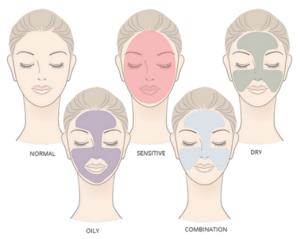
type…
Understanding the Different Skin Types
There are five main types of skin, namely: normal, dry, oily, combination and sensitive skin. Skin type is predominantly determined by genetics. However, the condition of our skin may vary greatly in accordance with the various internal and external factors it is subjected to, such as climate, hormones, medications, diet and products, to name a few.
1. Normal Skin Type
What is “normal” skin?
 The term ‘normal’ skin is widely used to refer to well-balanced skin. The scientific term for well-balanced skin is eudermic. Normal skin: is neither overly oily nor dry; is rarely sensitive or particularly problematic; has balanced sebum production and good blood circulation. This well-balanced healthy skin type has even levels of moisture and hydration, uniform texture and no obvious problem areas.
The term ‘normal’ skin is widely used to refer to well-balanced skin. The scientific term for well-balanced skin is eudermic. Normal skin: is neither overly oily nor dry; is rarely sensitive or particularly problematic; has balanced sebum production and good blood circulation. This well-balanced healthy skin type has even levels of moisture and hydration, uniform texture and no obvious problem areas.
How to identify normal skin
Normal skin may be identified by the following properties:
- Barely visible pores
- A fresh, even tone
- Soft and smooth texture with uniform transparency
- Good blood circulation
- Balanced oil production
- No blemishes and
- Minimal sensitivity
As a person with normal skin ages, their skin may become drier.
2. Dry Skin Type
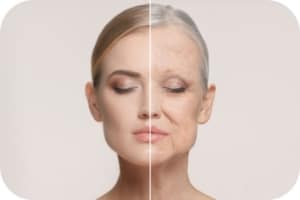
What is “dry” skin?
The term ‘dry’ skin is used to describe a skin type that produces insufficient sebum and as a result, dry skin lacks the lipids it requires to retain balanced moisture and build a protective shield against harsh external influences (this leads to an impaired barrier function). Often characterized by its flaky and rough texture, dry skin (or Xerosis) exists in varying degrees of severity and in different forms that are not always obviously distinguishable.
Significantly more women suffer from dry skin than men, and all skin gets dryer as it ages.
The causes of dry skin
Dry skin may affect anyone but some risk factors raise your chances of developing dry skin. These include:
- Age: as you age, your pores naturally produce less oils
- Medical history: you’re more likely to experience eczema or allergic contact dermatitis, if there is a history of these conditions in your family
- Seasons: dry skin is more common during the colder months, when humidity levels are relatively low. In warmer months, higher levels of humidity may prevent your skin from drying out.
- Cleansing habits: taking long and frequent baths, showers or cleansing with very hot water strips the skin of its necessary oils
Skin moisture is dependent on water supply in the deeper skin layers and even perspiration. Skin is constantly losing water via:
- Perspiration: active water loss from the glands caused by heat, stress or exertion and is vital for body temperature regulation and overall health.
- Trans-epidermal water loss (TEWL): the skin’s natural and passive process of water content regulation by diffusing about half a liter of water a day from the deeper skin layers.
Therefore, dry skin is caused by a lack of:
- Natural moisturizing factors (NMFs): especially urea, amino acids and lactic acid – that help to bind in water.
- Epidermal lipids: such as ceramides, fatty acids and cholesterol which are needed for a healthy skin barrier function.
As a result, the skin’s barrier function may become compromised.
How to identify dry skin
Dry skin ranges from skin that is a little bit drier than normal, to very dry skin, to extremely dry skin.

These differences are normally be distinguished by:
Dry skin
- Flaky, rough or tight feeling
- Slight itchiness
- Brittle, uneven texture
- Dull looking
- Low elasticity
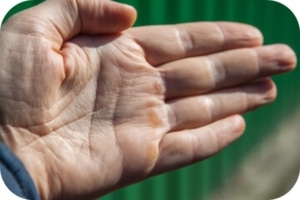
Very dry skin
- Mild scaling or patched flakiness
- Rough and blotchy appearance (may appear to be prematurely aged)
- Feeling of tightness
- Itchiness
- More sensitive to irritation, redness and risk of infection
 Extremely dry skin
Extremely dry skin
- Roughness and inflammation
- Chapping, fissures (cracks) and/or calluses
- Scaling
- Discoloration
- Frequent itchiness
Extremely dry skin is most commonly found on the elderly or on severely dehydrated hands.
3. Oily Skin Type
What is “oily” skin?
The term ‘oily’ skin describes a skin type with heightened sebum production. This excessing discharge of sebum is commonly known as seborrhea.
The causes of oily skin
A number of issues may trigger an overproduction of sebum. These include:
- Genetics: oily skin tends to run in families. If one of your parents has oily skin, you’re likely to have overactive sebaceous glands, too
- Stress and hormonal changes: androgens (the hormones mostly responsible for oil production) may sometimes fluctuate, stimulating an increase in sebum production, occurring most commonly during puberty, pregnancy and menopause. Stress and illness may also prompt for additional hormones to be released, and with those hormones excess oils may be produced
- Medications: acquiring oily skin is one of the possible side effects associated with taking oral contraceptives, hormone replacement medication and certain kinds of steroids. Some medications may also cause dehydration which leads to the production of excess oils
- Enlarged pores: sometimes pores stretch out due to age, weight fluctuations and previous breakouts – larger pores tend to produce more oil
- Environment: where you live and the time of year may contribute to oily skin. People in warmer, humid climates tend to have oilier skin. You are also likelier to have more oil on your skin during warmer seasons than you would in colder seasons
- Poor diet: frequent consumption of foods high in sugars, refined carbohydrates and dairy may lead to overactive sebum production
- Comedogenic cosmetics: frequent use of cosmetic products that cause irritation
- Methods of cleansing: scrubbing too hard and too often, with abrasive tools or coarse exfoliators, and using harsh chemicals and soaps not suited for your skin type, strips the skin of moisture causing glands to overproduce oil
How to identify oily skin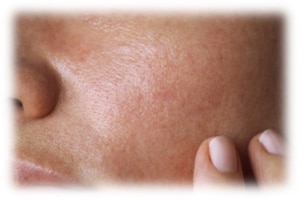
Oily skin may be identified by the following properties:
- Enlarged, obviously visible pores
- Greasy appearance
- Thicker, pale skin: blood vessels may not be visible
- Prone of breakouts
- Inflammation and discoloration in severe cases
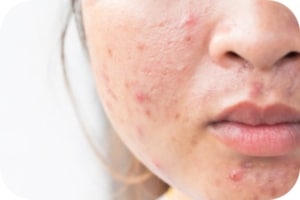 Oily skin is prone to comedones (blackheads and whiteheads) and to other varying forms of acne.
Oily skin is prone to comedones (blackheads and whiteheads) and to other varying forms of acne.
With mild acne, a significant number of comedones appear on the face and frequently on the neck, shoulders, back and chest too.
In moderate and severe cases, papules (small bumps with no visible white or black head) and pustules (medium sized bumps with a noticeable white or yellow spot at the center) appear and the skin becomes red and inflamed.
4. Combination Skin Type
What is “combination” skin?
The term ‘combination’ skin describes exactly that – having a combination of oily skin in some areas and dry skin in other areas. Typically, there’s a mix of oily and dry areas on different parts of your face, with the T-zone (forehead, nose, and chin) being slightly to very oily and the cheeks being normal to dry.
The causes of combination skin
The oilier parts of combination skin are caused by an overproduction of sebum. The drier parts of combination skin are caused by a lack of sebum and a corresponding lipid deficiency.
A number of factors may cause combination skin. These include:
- Genetics: if one of your parents has combination skin, you’re likely to have it too
- Climate: you may see a change in your skin’s appearance depending on the change in the climate. You are likelier to have more oil on your skin during warmer seasons and your skin may feel dry in colder seasons
- Products: the use of harsh products may and contribute to excess sebum production in the T-zone
How to identify combination skin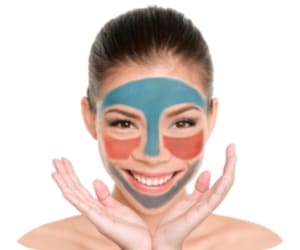
Combination skin may be identified by the following properties:
- Oily T-zone (forehead, chin and nose)
- Enlarged pores T-zone area, perhaps with some impurities
- Prone to breakouts only on forehead, chin and nose
- Normal to dry cheeks
- Sensitive cheeks
5. Sensitive Skin Type
What is “sensitive” skin?
The term ‘sensitive’ skin generally refers to skin that is more prone to inflammation or adverse reactions. People with sensitive skin are likelier to have strong, negative reactions to chemicals, dyes, and fragrances present in products that come into contact with the skin.
The causes of sensitive skin
Just like there are varying degrees of severity of dry skin, there are also different levels of sensitive skin. These may generally be divided up into four main types, namely, naturally sensitive, environmentally sensitive, reactive, and thin.
- Naturally sensitive skin: the cause of this is genetics and may be linked to inflammatory skin conditions such as eczema, psoriasis and rosacea
- Environmentally sensitive skin: this type of sensitivity, as the name implies, is triggered by the environment. Factors such as sun exposure, cigarette smoke, air pollution that come into contact with the skin may cause irritation
- Reactive skin: direct contact with certain products may cause the skin to react, becoming irritated, resulting in papules or pustules, warmness, redness and/or inflammation forming, where the irritant came into contact
- Thin skin: as we age, our skin naturally becomes thinner, and thinner skin is easier to irritate
How to identify sensitive skin
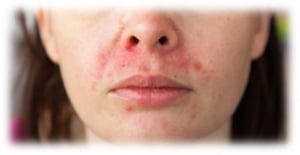
Sensitive skin may be identified by the following properties:
- Skin feeling itchy and tight
- Uneven texture
- Oily in warmer seasons
- Dry in colder seasons
- Reacts easily to certain skincare products
- Redness after a hot water application (bath or shower)
- Feels itchy while wearing tight clothes
- Flushes easily after eating spicy food
If you need help with identifying your skin type, we’ve included below a very basic skin type test, which may be a useful tool:
Determining Your Skin Type
If…
• Your skin doesn’t get more oily or drier during the day
• You only experience dry parches or excess oil seasonally
• You rarely experience breakouts or are sensitive to products
Your skin type is likely…

If…
• You experience dry patches or flaking skin mid-day
• Your skin is rare oily, even at the end of the day
• Your skin often feels tight, itchy, or dry after cleansing
Your skin type is likely…

If…
• Your face is shiny or greasy by mid-day, regardless of the season
• You frequently experience breakouts
• You have large and visible pores
Your skin type is likely…
 If…
If…
• Your T-zone is consistently oily and your cheeks are often dry
• Your visible pores are concentrated in your T-zone area
• You experience acne and dry patches at the same time
Your skin type is likely…

If…
• You often experience redness or irritation after applying new products or products with ingredients, like fragrance
• You have skin conditions like rosacea, eczema, or psoriasis
Your skin type is likely…
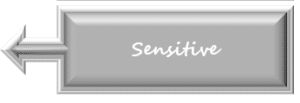
However, if you need further advice, we highly recommend that you contact us for a free consultation.
Evaluating skin type and condition
Unlike skin type, skin condition may vary greatly during a person’s lifespan. There are many internal and external factors that determine and affect its condition, including: climate and environment, medication, stress and illness, hereditary traits which influence the levels of sebum, perspiration and natural moisturizing factors that your skin produces, and even the products you use and the skincare choices you make.
Skincare products should ideally be selected to match skin type and address skin condition. Dermatologists and other skincare experts determine a person’s skin type condition by measuring the following factors:
 Signs of Aging
Signs of Aging
Our skin type can evolve during our lifetime. Those with an oily skin type in their teenage years can find their skin becoming drier post-puberty and those with a normal skin type can find their skin getting drier as they age.
As all skin types age, skin loses elasticity, volume and density, fine lines and wrinkles appear and changes in pigmentation can occur. Understanding and measuring the signs of ageing helps us to determine the condition of our skin.
Skin Color
Skin color and ethnicity influences how our skin reacts to external forces such as the sun, pigmentation disorders, irritation and inflammation. Basic skin color is determined by the density of the epidermis and the distribution of melanin.
The redness of skin is also a useful measure of skin condition; it indicates how successful our circulation is and is helpful in identifying conditions such as couperose (or rosacea).
Sebum and Sweat Production
The amount of sebum produced by the sebaceous glands in skin controls the efficacy of the skin’s barrier function and, as a result, the condition of skin. The overproduction of sebum can lead to oily, acne-prone skin, while low sebum production causes dry skin.
The perspiratory glands in skin produce sweat to help the body to maintain its optimum temperature. Excessive or low sweat production can influence skin condition.
Skin Sensitivity
Sensitive skin is skin that is easily irritated and is more reactive to different factors, that are generally tolerated by well-balanced (normal) skin. For some people, sensitive skin is a permanent condition; for others, sensitivity is triggered by certain internal and external factors. It occurs when skin’s natural barrier function is compromised, causing water loss and allowing penetration of irritants. Symptoms are exacerbated by factors that facial skin is most exposed to, from the sun to some ingredients in cosmetics and cleansers. Identifying and evaluating symptoms such as redness, a rash, stinging, itching and burning help in determining skin condition.
Natural Moisturizing Factors (NMFs)
Naturally produced in healthy skin, NMFs such as amino acids help to bind water into the skin, maintain its elasticity and suppleness and prevent it from becoming dehydrated. When the skin’s protective barrier is damaged it is often unable to retain these essential NMFs so skin moisture decreases and condition is affected.
WE ARE HERE FOR YOU!
We sincerely hope that this article has helped you to understand the importance of knowing and understanding you skin type and want you to know that our friendly and qualified staff are always here to give you any recommendation, with utmost passion for skincare.
We proudly invite you to peruse our incredible product range at https://urbanbody.myshopify.com! Our collection of R3 Derma Health products contains the highest concentration of active and natural ingredients, best suited for those individuals who desire faster results.
If you have any further questions, you are welcome to contact us at info@urbanbodylaser.com, live chat or at (604) 265-7507. Or, if you would like to take advantage of our promotional offers, please visit https://www.urbanbodylaser.com/promotions for more information.
The IPL skin rejuvenation treatment or Intense Periodical Light Photofacial, often referred to as photofacial or photorejuvenation, is a cosmetic treatment that helps you get rid of brown spots, irregular pigmentation, freckles, fine lines and other signs of aging. The treatment is performed at our medical spa, and is completely safe.
So, why should you go for it?
1. Little to no downtime
Since IPL skin rejuvenation treatment is a non-invasive treatment, it involves little to no downtime. The procedure is performed with the help of light energy of specific wavelengths, outer layers of the skin are not damaged during the process. This means that you don’t require to take any time off work, or disturb your schedule. The treatment even allows you to put on makeup, (although gently.) At Urban Body Laser we provide mineral make-up application after treatment. This treatment is different than traditional laser treatments which could damage the skin or have other side effects.
2. Short sessions
One of the best parts of a IPL skin rejuvenation treatment is that it lasts for about 30 to 40 minutes per session. This means that you can get this treatment over your lunch break, and once done, you can return to your work. For the best results and to be completely effective, you generally need multiple sessions. We would recommend you book a consult with our medical aestheticians to fully understand the amount of treatments needed.
3. Get clear skin and a more youthful appearance
Our IPL skin rejuvenation treatments target a range of problems. It can help you hide the small blood vessels that have become visible. It can also help you get rid of irregularities in the skin tone, blemishes, sunspots, pigmentation and other skin issues.
4. Control acne
Do you have acne-prone skin? An IPL skin rejuvenation treatment can help you treat severe acne and the associated marks and redness.
Read more about treatments for acne
5. Minimize signs of aging
IPL skin rejuvenation treatment can help you tackle your visible signs of aging, including reducing the appearance of wrinkles, sunspots and fine lines. The treatment works by stimulating the collagen growth and improves the skin’s texture by penetrating deep inside the skin layers.
6. Compatible with other treatments
IPL skin rejuvenation treatments can be done in conjunction with other treatments, including microneedling and microdermabrasion for maximum anti-aging results.
7. Minimal discomfort
Our IPL skin rejuvenation treatment is a completely painless procedure. While a small percentage of patients feel a slight sensation during the procedure, most of the others experience minimal pain. Since IPL is a non-invasive procedure, it involves very little risk. While it is possible to experience certain side effects like bruising, redness, or minor swelling these are minimal and disappear naturally within a few hours or days.

Before and After IPL Skin Rejuvenation Treatment
Why Choose IPL Skin Rejuvenation Treatments With Urban Body Laser?
Are you ready to turn back the clock with IPL skin rejuvenation treatment? Urban Body Laser is one of Vancouver’s longest running and most trusted skin and laser clinics. Our Technicians are trained to the highest standard to ensure a safe and effective treatment.
Call today to book your next treatment! (604) 265-8089
We are conveniently located on the NW corner of Hornby and Robson at Suite 860 – 777 Hornby St., directly across the street from the Art Gallery building. You will find secure public parking in the Paramount Building, one block south on Hornby Street. We also share parking with Hotel Vancouver next door. When parking, please follow the sign that says “Office Tower Parking.”
IPL photorejuvenation and IPL skin rejuvenation before and after photos.
Call Today To Book An Appointment For An IPL Skin Rejuvenation Treatment!
Microneedling is becoming an ever increasingly popular skincare treatment and for good reason! It’s incredibly effective at treating a slew of skin issues including wrinkles, fine lines, scars and uneven skin texture. At Urban Body Laser in our medispa we offer microneedling treatments using the DermaPen for a higher intensity treatment, and we also have an at home option, the Derma Roller for guests who would like to incorporate the benefits of this technology into their regular skincare routine.
What is a Derma-Roller?
Our at home Derma Roller contains hundreds of tiny needles that when passed over the skin treatment area create micro-injuries on the skin. These micro-injuries then cause the skin to produce collagen and elastin in much higher levels than usual as a healing response to the injury. As the skin heals you’re left with a tighter, brighter and younger looking complexion. Introducing this tool  into your skincare regimen is an ideal way to begin reducing the appearance of fine lines and wrinkles, and for thickening and plumping the skin under the eyes.
into your skincare regimen is an ideal way to begin reducing the appearance of fine lines and wrinkles, and for thickening and plumping the skin under the eyes.
Needle size
At our medispa, Urban Body Laser we offer 2 different sized at home derma rollers- the 0.3mm or the 0.5mm roller. We suggest never purchasing a roller larger that 0.5 mm, as the thicker needles may put you at risk for damaging the skin. If you think your skin requires a larger needle size we recommend coming into our medi spa for an appointment with one of our skincare professionals.
One of the biggest benefits of using an at home Derma Roller is so that you can maximize the effectiveness of your serums. Research has shown that absorption of skincare ingredients is increased by up to 90% when using microneedling or an at home derma roller. Make sure you buy a quality serum with potent active ingredients to get the most benefit out of your roller!
Keep in mind that skincare products and serums containing ingredients like hyaluronic acid, stem cells, peptides, and growth factors will be the most effective in order maximize the effects of your microneedling by enhancing collagen production, increasing the speed of cellular turnover, treating hyperpigmentation, and plumping skin. Take caution when using active ingredients such as retinol or vitamin C, these ingredients although they are beneficial can cause sensitivity- applying them after your microneedling session or with an at home derma roller may cause irritation.
How to use your at home derma roller?
Begin by first cleansing the skin, and follow with a gently chemical skin exfoliant like salicylic or glycolic acid to increase absorption even more.
Next apply one to two layers of the serums of your choice (we’ve listed our favourites below!)
Use your derma roller to gently roll over your skin vertically, horizontally, and diagonally. Roll twice over your cheeks, forehead, chin, lips, and neck. Don’t press so hard that you cause yourself pain, be especially gently on the areas of the face where skin is thinner such as your lips or under your eyes- just apply as much pressure as you can tolerate comfortably. Always avoid your eyelids!
After your done rolling the skin you can add a second layer of your serum. If you don’t have sensitivity you can apply retinol after you’re done rolling.
How often should I use my derma roller?
You can safely use your derma roll up to three times per week- however it’s up to you- some of our guests choose to use their roller 3X a week while others are far less frequent. Those with discoloration or wrinkles may want to roll more often, whereas some of our guests are looking to just maintain their skin’s appearance. Ask one of our skincare estheticians what they think is right for you next time you’re in studio, or give us a call.
After using your derma roller give it a good cleanse with rubbing alcohol and keep it stored in a protective case.
Our at home derma roller selection:
0.3mm Dermal Roller with LED – $100
0.5mm Dermal Roller with LED – $100
Our medispa uses the R3 Derma Health line of skincare products to deliver potent medical grade ingredients for maximum results! Consult with our skin care experts to find out which products are right for you!
Aox+
Rejuvenate
Enrich
Soothe
Clearify
Filler Serum
Illuminating Serum
Ready to get started with an at home Derma Roller? Give us a call at 604-696-5506 or stop by our studio in downtown Vancouver today.
When it comes to sun safety, there are the basics that we can all agree on: cover up with a hat or tightly knit clothing, wear sunglasses to protect your eyes, and avoid long-term exposure. Surprisingly, even on a National level other major protocols that we would think would be agreed upon across the board, are still debated by professionals like pharmacists, dermatologists, and oncologists.
Last year, the Canadian Sun Safety Guidelines got their first update in 20 years. The updates covered things like avoiding the sun at it’s hottest, and what time that is in Canada with climate change accounted for; what type of fabrics are best suited as a protective layer; and a discussion of the appropriate SPF to use. While we are pleased that many respected associations had input in these updates, and that the topic is getting well-deserved attention, we are disappointed with the lack of discussion on many key prevention techniques.
Here are the mains reasons why we feel these updates need another look:
- No mention of Chemical vs Physical Sunscreen: In a recent post, we discussed the benefits and risks between chemical and physical sunscreens. We feel it is best to avoid the toxic chemical sunscreens, and rely on physical blockers. Ingredients in chemical sunscreens have been linked to multiple cancers and hormone interference. The dangers of chemical sunscreen should be highlighted in our National guidelines and physical sunscreens should be encouraged.
- Reapplication: While the guidelines do encourage the public to reapply often and “use lots”, they do not specify an actual timeline. “Often” is too subjective and leaves room for error, which could result in damaging consequences. A reapplication every 90 minutes is necessary when directly exposed to the heat, a metric which should be included.
- Seasonal weather: The intro to the Sun Safety Basics talks about “sunny days”, when really, guidelines should cover year-round sun exposure. Even in a seasonal climate like Canada, the sun’s rays are on us no matter what the weather. Damaging rays can make it through clouds, and even in the shade, reflections off of sand, surfaces, and even snow can be harmful (goggles tan anyone?!).
As the article announcing the changes says, “…it’s kind of confusing if you hear one message from one group that doesn’t exactly fit with the message from another.” These changes are a step in the right direction, and bring light to very important health concerns, but we feel that they still have a long way to go to properly educate our country.
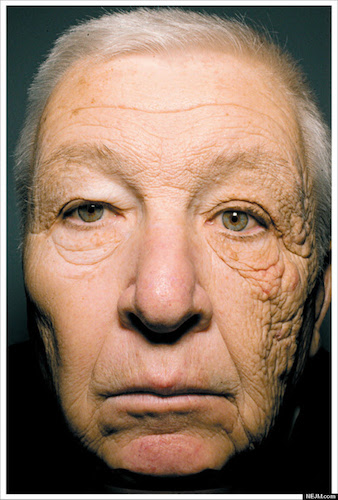
Image Source: imgur
*Sixty nine year old male, truck driver for 28 years. Approximate age difference from one side of the face to the other is 20 years.
While prevention is the number one step towards staying safe from the sun’s harsh rays, repairing damage already done is another important step. Everyone can tell when they get a nasty burn, but there is so much unseen damage happening to our skin just from our everyday lifestyles.
We have in our arsenal a few favourite products that assist in revitalizing and repairing your sun-exposed skin.
- Aox + Serum: Cascading Antioxidant Serum is a high potency multi-C cocktail that drenches skin in an infusion of powerful anti-oxidants. Stable Sodium Ascorbyl Phosphate and superior ORAC scoring Kakadu Plum, Astaxanthin, Ferulic Acid and Vitamin E offer advanced protection from photo-aging and dermal instability caused by free radical aggression. This fast penetrating formula combats UVA /UVB damage while delivering intensive levels of skin revitalizing and collagen synthesizing nourishment.
- Restore: Correctinol Creme with Argan, Alpine Rose and Grape Skin Plant Stem Cells offers a unique solution for those with mature skin looking for mild daily exfoliation and exceptional hydration. Infused with a cocktail of anti-oxidants such as Resveratrol, Vitamin C, Vitamin E, Ferulic Acid and Argan Oil, moisture is delivered to the skin via water based humectants which leave skin feel smooth as silk. Mild Flower Acids improve the barrier function and hydration of the skin resulting in smoothing, improved clarity, and uniformity of tone.
- Rejuvenate+: Experience the unbelievable rejuvenating benefits of Plant sourced Epidermal Growth Factors which encourage the process of cellular renewal while boosting the vibrancy of Elastin, Collagen, and Hyaluronic Acid in the epidermis. This serum contains five natural source growth factors plus powerful plant-derived extracts which fortify and support the dermal matrix. Passionfruit and Lemon Fruit Acids gently encourage cellular turnover resulting in a more youthful appearance.

As we wind down from summer, it is important to evaluate how much exposure your skin has suffered in the brightest months and how to care for your sun-kissed cells. Our team of medical estheticians is passionate about keeping your skin safe. Talk to us to learn what treatments and products are best suited to your lifestyle to keep compounding damage to a minimum.
Sources:
http://globalnews.ca/news/2744139/heres-a-list-of-changes-to-canadas-sun-safety-guidelines-the-first-update-in-20-years/
https://www.canada.ca/en/health-canada/services/healthy-living/sun-safety.html
Contact:
Urban Body Laser
777 Hornby St #860, Vancouver, BC V6Z 2G3
(604) 696-5506
With summer on our doorstep, more skin is out in the open, which means more spots that you don’t normally show are making an appearance. This is the time you want those bikini lines and back patches gone more than ever! You have probably heard that once you get your tan on, you have to stop any sort of hair removal treatment, which for safety reasons, can be the case. We have a solution for you!
We use the best in up to date laser removal technology and offer a variety of treatments. The Sciton Long Pulsed 1064 NdYag is a high powered technically advanced Laser Hair Removal System among our options. This system delivers a unique combination of laser parameters and contact cooling protection. The depth of the laser gives clients of all skin types an extremely safe and effective treatment.
Laser Hair Removal uses precise wavelengths that can focus on the melanin pigment and target it. These wavelengths are able to focus on the pigment while avoiding damage to the surrounding skin. When laser hair removal first started, the lasers used did not have a great ability to focus wavelengths and, the darker your skin, the harder it was to remove the hair.
The longer pulse of the NdYag targets the deeper pigment of the the hair follicles below the melanin pigment, making it safer for darker skin tones and more effective. The right wavelength reaches even the deepest hair roots, which can be 4-6 mm below the surface of the skin in some cases. There is less heat build up within the skin using the NdYag, and the contact chilled plate cools the skin off providing more protection and comfort during treatment.

Therefore, it is a safe treatment to use all year round. Even if you have been sunning yourself, you can continue your hair removal process and not have to worry. We do recommend that you still avoid tanning 1 week prior to treatment, just in case.
Come in to talk with our medical estheticians about the right treatments for your skin types. We have your stress-free solutions to get ready for summer!
Contact:
Urban Body Laser
777 Hornby St #860, Vancouver, BC V6Z 2G3
(604) 696-5506
Our skin is precious and we need to protect it. Every year, the summer rays get us thinking that maybe we need to update our sun defense regime. The thing is, we should be shielding ourselves all year round. Every time we walk outside we are exposed to harmful UVA and UVB rays. In our hotter months, higher heats make covering up uncomfortable, and a wide brimmed hat isn’t always practical.
So what are our options? Most of us are overwhelmed by what the drugstore aisle offers to shade our skin. The thing is, the best options aren’t always sitting on those shelves. There is a big difference between the protection offered by a physical sunscreen versus a chemical sunscreen, which is what most common drugstore options will be. Let us explain:
Physical Sunscreen
Physical sunscreen, or physical blockers, are non-toxic substances that use ingredients such as zinc oxide and titanium dioxide. These are natural minerals that have been ground into fine powders. Physical sunscreen works by deflecting the sun and blocking those harsh UV rays from damaging your skin. You know how on a hot, dry day at the beach, it is still moist and cool under the rocks? That’s how physical sunscreen works. It is essentially crushed, powdered rock keeping the sun’s heat away from your skin and locking in the moisture. That means that there is no waiting for anything to sink in, it starts protecting immediately after application. It is also better for sensitive and heat activated skin types.
Chemical Sunscreen
This type of formula is combined with 12 different chemicals, some of which have not been FDA approved. Some chemical sunscreens can produce free radicals that can cause irritation and damage to the skin. They’ve been proven to interfere with hormones such as estrogen, progesterone, and thyroid, which have been linked to breast, ovarian and prostate cancer. It is also more likely to irritate sensitive skin types and clog pores.
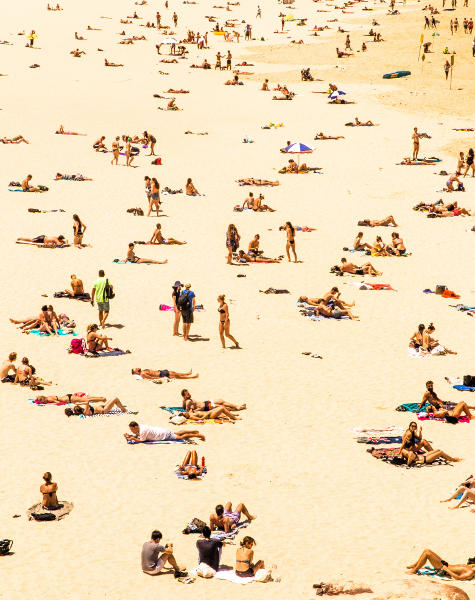
For our medical estheticians, the non-toxic physical sunscreens are their top choice. Physical sunscreen is less irritating, has a longer shelf life, and lasts longer in direct UV light.
To take care of our faces, we rely on the the Sunforgettable line by Colorescience, a skin care collection that’s infused with physical blockers designed to make using sun protection part of your daily routine. The Sunforgettable Brush comes in multiple shades, is easy to to re-apply, and is a chemical and fragrance free option that you can barely tell you have on. Or try the Tint du Soleil from Colorscience, a SPF 30 foundation in a creamy, hydrating formula, designed to feel like bare skin. If an everyday foundation isn’t for you, try adding a small amount of physical sunscreen into your moisturizer to easily incorporate it into your morning ritual and ensure your skin is protected. Being that physical sunscreen is so pure, only a little amount is needed for you to get the right amount of protection.

Even when we feel like we haven’t seen it for months, that sunshine is up there. We need to be protecting your skin from head to toe all year round. With shorter sleeves and high hems in our near future, we need to be especially vigilant. Our staff have a wealth of knowledge on the topic. Send your questions our way or come for a visit!
Contact:
Urban Body Laser
777 Hornby St #860, Vancouver, BC V6Z 2G3
(604) 696-5506
References:
http://blog.reneerouleau.com/chemical-vs-physical-sunscreens-pros-cons/
http://www.skinacea.com/sunscreen/physical-vs-chemical-sunscreen.html#.WSTGJFPyvBI
https://www.colorescience.com/
R3 Derma Pro is an intensive medical grade collection that delivers multi-layer strengthening to the skin. Our collection contains the highest concentration of active ingredients and visual improvement as a result of synergistically blending powerful peptides and cutting edge skin conditioners.
Our Aloe Gel reduces redness and swelling due to sun exposure, windburn, razor burn, bug bites, hypersensitivity reactions and many other causes.
Our Calming Cleanser gently removes impurities from sensitized skin with an anti-inflammatory cleanser to calm and cool irritation.
Experience Boost – remarkable rejuvenating and age defying properties of Argan, Alpine Rose and Grape Skin Stem Cells which revitalize and protect skin on a deep cellular level.
This collection is best suited for our guests who desire faster results and higher activity levels from the ingredients in the products we carry.

The service the girls provide here is amazing. Nicola always goes above and beyond to take care of my and make sure I’m comfortable for my treatments. They also have amazing skincare products and have great advice for advancing your skincare routine. – Annie D.
Another beautiful summer in Vancouver has come and gone. Patio lunches, seawall bike rides, and lounging at Third Beach may all seem like sweet distant memories. However, despite that the temperature has dropped and the days have grown shorter, there may be a few parts of summer that continue to linger…on your skin. That’s why Fall skincare treatments and products are critical for reversing those summer lovin’ days.
Even with the best physical sunscreen and an endless array of floppy hats, you may not have been able to completely dodge the after effects of harmful ultraviolet rays. So now that the tan has faded and you’ve traded swimsuits for wool scarves, the damage may be coming to the surface. However, not all is lost; the good news is that it’s not too late to do something about it.
From visible dark spots to rough patches on your skin, there are many ways that UV rays have wreaked havoc on your epidermis. Even if you can’t spot a few extra sun spots or moles, there are long-term effects that could haunt you later, as we know all too well how the sun can cause premature aging in the form of wrinkles, sagging skin, and fine lines.
The good news (yes, there’s more good news!) is that we offer a number of services that can combat these after effects. Here are Urban Body Laser’s favourite Fall skincare tips.
Best Fall Skincare Treatments
Microneedling
Don’t be intimidated by the name. This amazing treatment helps with product absorption as well as increases collagen, elastin, and circulation to your skin by providing tiny punctures to epidermis. These “micro-injuries” tell your brain to kick into repair mode, prompting more collagen to be produced and repair any damaged areas.
Whether you come to Urban Body Laser for treatments or we set you up with an at-home regime, this is an excellent post-summer treatment when paired with high quality skin care because it allows for better absorption of nutrients.
Photorejuvenation
Are you noticing new liver spots? Fine lines? Unwanted freckles?
Then we highly recommend booking Photorejuvenation treatments. It uses light (in a good way) to repair and revive your skin. Non-invasive and highly effective, these can be done over your lunch hour. After a series of treatments, you’ll notice a significant reduction of unwanted pigmentation and the appearance of smoother, revitalized skin.
Microdermabrasion
You know that feeling after you’ve just vacuumed your living room, or dusted your home? All of those micro particles are gone, revealing the true nature of your surfaces and leaving a sparkling finish.
Well, your skin is no different. It too needs a little help to remove the built-up waste, dust, and outdoor elements that prevent its true beauty from shining through. Enter Microdermabrasion. Compared to the texture of your cat’s tongue, this treatment is a favourite of celebs like Gwenyth Paltrow and Kim Kardashian, and gently removes the outer layer of the epidermis, stimulates collagen and elastin production, and improves blood flow for firmer, healthier looking skin.
If you’re starting to see the consequences of too much fun in the sun, don’t fret. Because everyone’s skin care needs are different, our medical estheticians can provide a consultation on which products and services are right for you.
Quality Skincare
While the services we just listed will do wonders for reversing the damaging effects of the sun, they’re only going to be truly effective if you pair them with high-quality skincare that’s free of harmful chemicals and toxins. The only brands we use are Osmosis, Colorescience, and Pro-Derm. Not only are they known for their incredible anti-aging properties, but they’re also infused with nutrients that help with the repair process.
If you’re starting to see the consequences of too much fun in the sun, don’t fret. Because everyone’s skin care needs are different, our medical estheticians can provide a consultation on which Fall skincare products and services are right for you.
With another amazing summer in Vancouver behind us, September is all about renewal and fresh beginnings. So if you’ve been neglecting your skin in favour of summer BBQ’s and patio sessions, we are here to the (derma) rescue.
With celebrity devotees like Kim Kardashian and Gwyneth Paltrow, it’s little wonder why everyone’s talking about the DermaPen, a revolutionary little tool that kick starts your body’s own natural collagen production. Also referred to as Microneedling, this treatment creates tiny punctures in the skin, tricking the body to build collagen and elastin (which are basically your BFF’s to anti-aging). Besides softening wrinkles, it’s also been proven to lessen the appearance of acne or trauma scars, shrink pores, and fade brown spots.
DermaPen: The New Facial
The old saying that good things come in small packages couldn’t be more true. This little tool offers big results, and has completely disrupted the idea of the traditional facial. If you’re looking for an alternative to laser therapy, Microneedling is the perfect solution for patients with darker skin tones at risk for hyperpigmentation, or those who don’t want to avoid the sunlight for weeks.
Plus you can target much more than just the face. DermaPen treatments can be done anywhere, and are particularly popular for those who suffer from stretch marks or post-natal scarring. Our medical estheticians have treated areas like the legs, chest, or butt, creating a soft, lifted, and smooth appearance in as little as five treatments.
Wondering how it works or want to learn more? We have plenty of information and videos on our website. In addition, feel free to contact our knowledgeable staff by booking a free consultation.
If you’re a regular listener to The Peak FM like us, then Casey-Jo needs no introduction. Hosting the mid-day show, this adventurous Vancouverite knows a thing or two about music — and Microdermabrasion.
In fact, she’s been sharing all of her fabulous self care rituals to feeling healthy and beautiful from the inside out — with a little help from Urban Body Laser.
The Peak FM and Microdermabrasion
Recently, she shared her experience after receiving Microdermabrasion at our medical spa on The Peak FM’s blog. After her first appointment with our amazing medical esthetician Janelle, she realized just how much stress, lack of sleep, and the environment were affecting her skin.
If you’re unfamiliar with this procedure, we’ll quickly bring you up to speed. With celebrity fans like Gwenyth Paltrow, Gisele Bundchen, and Penelope Cruz, this virtually painless treatment gently rejuvenates the skin by non-invasive exfoliation. By removing the outermost layer of dead skin cells, Microdermabrasion leaves the skin feeling smoother and dare we say, younger. Our clients have found that Microdermabrasion effectively treats and minimizes a wide range of skin conditions including fine lines and wrinkles, discoloured and congested skin, and even ingrown hairs.
Using the state-of-the-art Pristine Precision Diamond Peel System, the densely packed diamonds gently remove top layers of the epidermis, stimulates collagen and elastin production, and improves blood flow for firmer, healthier looking skin. Best of all it’s easily customizable for all skin types and for the full range of body areas. To learn more, watch our video to see how it works.
Just a few days after her second Microdermabrasion appointment, Casey-Jo said that her makeup is smoother and more comfortable to wear, plus her pores were nowhere in sight. What else did she have to say? Find out by reading her latest blog post!
“Self care is one of the most important things, because if you’re no good to yourself, then you’re not good for anyone.” ~ Casey-Jo
Learn more about how Microdermabrasion can help your skin or book a free consultation.
If you’ve ever followed Urban Body Laser on Instagram, visited our medi-spa, or perused through our blog, then you’ve probably heard us say once (or maybe a 100 times) how important daily application of sunscreen is for anti-aging. Not only does it prevent wrinkles, fine lines, and sunspots from prematurely forming, but it also protects you from more serious conditions like severe burns, cancer, or myositis, an autoimmune disease.
So now that Spring is in full swing and summer is on the horizon, this time of year is when many can’t wait to escape from hibernation and head into the great outdoors. Whether it’s Kits Beach or Stanley Park, Vancouver is an oasis for heading out and kicking back. However, with that comes an even greater reasonability to protect your skin.
With so many products out there, we know it can get confusing. Plus, not all sunscreens are created equal, an issue that we blogged about before. To avoid adding toxic chemicals to your delicate epidermis but also gain the protection you want, look no further than Colorescience’s Sunforgettable Mineral Sunscreen.
This little magical wand makes application easier than ever. Not only is it an all natural, non-irritating, and portable product, but it also protects against Broad Spectrum UVA/UVB rays and offers up to 80 minutes of water-resistance. Forget having to apply greasy lotions, the Sunforgettable Wand is safe to use on all skin-types, including kids. And guys don’t worry; it may look like make-up, but we promise it’s completely fella-friendly.
Here’s how easy it is:
- Remove rubber band and prime brush in circular motion on top of hand until minerals begin to flow.
- Sweep brush over entire face and neck in circular motions to release powder.
- Apply liberally and evenly before sun exposure; reapply every two hours throughout the day for continued water resistant protection.
- Can be used on head, face, neck, chest and back of hands.
- For a full step-by-step process, watch this video on Colorescience!
There are a wide variety of colours that will match any skin tone, including a new ‘Deep’ shade. And incase you need another reason, get 20% off this month for all Sunforgettable products at Urban Body Laser! To find out which colour you should choose, visit our medical estheticians for a free consultation.
Urban Body Laser
777 Hornby St #860
Vancouver, BC V6Z 2G3









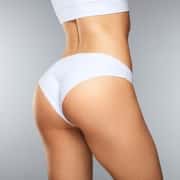








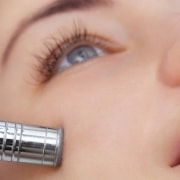 Urban Body Laser Vancouver
Urban Body Laser Vancouver